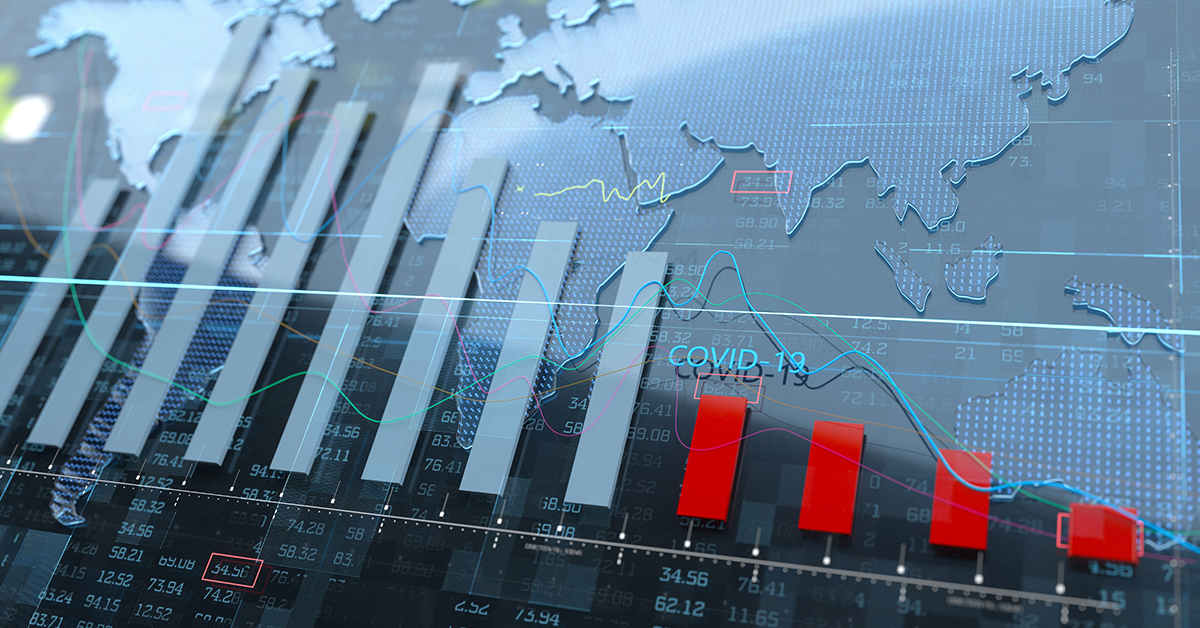From Green Ambitions to Metal Realities: the Future of Commodity Investing
12 August 2024
These investors understandably think the energy transition changes everything. Tomorrow’s electric vehicle fleets, wind farms and fields of solar panels can’t be built without huge quantities of metals and minerals.
But the focus on metals goes beyond green ambitions. The current increase in chip demand is highlighting the importance of various niche minerals (see our rare earths paper), many of which are mainly produced in China. This includes gallium and germanium, by-products of aluminum smelting, on which China has recently imposed export restrictions.
Further, tin is a significant yet often overlooked beneficiary of the chip boom, with almost 50%1 of it being used as solder in circuit boards. The global tin supply is concentrated and its production is declining. Nearly half of the world's tin is smelted in China, and about 20% in Indonesia, which has intermittently halted tin exports to boost its domestic industry.
What retail investors want to know is whether they should allocate a small part of their portfolio to commodities alongside its main building blocks of equities, fixed income and real estate. My answer is yes you could consider this, but with a qualification: if your financial situation and portfolio are compatible, you could also consider to invest in mining stocks rather than just physical commodities. Let me explain.
Mining Equities and Inflation
Fundamentally, history has shown so far that mining (or resource) equities act as a hedge against inflation. They did that in the 2000s and are doing so again today, at a time when inflation is proving harder to tame than expected. That’s the classic reason for having an allocation in your portfolio over the long term.
Resource Equities: Doing What They're Supposed To Do
Energy & Materials vs. S&P 500
Mining equities offer you exposure to rising metals prices but also generate the cashflows to pay dividends. What’s more, they often deliver leveraged exposure—their prices may magnify the upwards movements of commodity prices, as well as the downwards. Lastly, mining companies can actively improve their operations by leveraging new technologies, reducing inefficiencies which could lead to higher profits.
Decarbonization, Geopolitics and Under-investment
What’s changed the game today when it comes to having an allocation to commodities, and metals in particular, is the drive for decarbonization at a time when the world is deglobalizing and mines have been starved of investment. Think of how dependent the energy transition is on metals. Electric vehicles, for instance, require six to eight times more minerals than conventional cars, according to the International Energy Agency2.
Minerals Used In Electric Vehicles (EVs)
Minerals Used In Clean Energy Technologies
Deglobalization and geopolitical tensions mean that security of supply is a concern, as the production and processing of minerals is concentrated in just a few countries. For instance, the OECD reports that over the last 10 years there has been a five-fold surge in export restrictions on industrial raw materials. Increasing resource nationalism significantly challenges global supply chains and the shift toward cleaner energy sources. Concurrently, trends like "friendshoring" are emerging to fortify supply chains against vulnerabilities. Strategic alliances are becoming more crucial in this context.
Distribution of Rare Earths Production Worldwide as of 2024, by Country
Share of Global Production, %
Source: US Geological Survey | @ Statista 2024 | Additional information: Worldwide: 2024.
At the end of May 2024, the EU brought its Critical Raw Materials Act into force, aiming to secure a sustainable supply chain for materials that are vital for European climate goals. Its ambition is that by 2030 at least 10% of all critical raw materials consumed in the EU should be produced in the EU. This is seen as important for both the bloc’s strategic autonomy and responsible sourcing of minerals.
Consider this drive to increase supply in the EU and around the world in the context of many years when mining companies have under invested in exploration. Boosting supply again is not as simple as flicking a switch. It takes an average of 17 years for new mining projects to reach production, with lithium taking as little as four years and nickel almost 20 years.
A New Supercycle?
Putting all these factors together raises the possibility that conditions may be in place for a supercycle, as was experienced in the 1970s and 2000s. Back then commodity prices rose by more than 300%3 from start to peak over 10-15 years, albeit with considerable volatility. At the time, many investors had specific allocations to commodities.
I have no doubt that, once again, it makes sense to allocate some of your portfolio to have metals and minerals exposure. VanEck offers a range of ETFs in mining companies as well as rare earths and strategic metals that give you diversified, easy access to this powerful theme.
Getting back to my conversations with investors, green ambitions are meeting metal realities. This is the future of commodity investing.1 Clarke, W. (2024, April 23). Not just copper: minerals markets have yet to catch up on the implications of the AI boom. Mining Journal. https://www.mining-journal.com/base-metals/opinion/4200419/copper-minerals-markets-catch-implications-ai-boom
2 IEA (2021), Minerals used in electric cars compared to conventional cars, IEA, Paris https://www.iea.org/data-and-statistics/charts/minerals-used-in-electric-cars-compared-to-conventional-cars, Licence: CC BY 4.0
3 Source: BBG as of 11/06/2024. Bloomberg Commodity Index Total Return rebased 100 at every start of Supercycle performance tracked every week
IMPORTANT INFORMATION
This is a marketing communication. Please refer to the prospectus of the UCITS and to the KID before making any final investment decisions. This information originates from VanEck (Europe) GmbH, which has been appointed as distributor of VanEck products in Europe by the Management Company VanEck Asset Management B.V., incorporated under Dutch law and registered with the Dutch Authority for the Financial Markets (AFM). VanEck (Europe) GmbH with registered address at Kreuznacher Str. 30, 60486 Frankfurt, Germany, is a financial services provider regulated by the Federal Financial Supervisory Authority in Germany (BaFin).
The information is intended only to provide general and preliminary information to investors and shall not be construed as investment, legal or tax advice VanEck (Europe) GmbH and its associated and affiliated companies (together “VanEck”) assume no liability with regards to any investment, divestment or retention decision taken by the investor on the basis of this information. The views and opinions expressed are those of the author(s) but not necessarily those of VanEck. Opinions are current as of the publication date and are subject to change with market conditions. Certain statements contained herein may constitute projections, forecasts and other forward-looking statements, which do not reflect actual results. Information provided by third party sources is believed to be reliable and have not been independently verified for accuracy or completeness and cannot be guaranteed. Brokerage or transaction fees may apply.
The S&P 500 Index (“Index”) is a product of S&P Dow Jones Indices LLC and/or its affiliates and has been licensed for use by Van Eck Associates Corporation. Copyright © 2020 S&P Dow Jones Indices LLC, a division of S&P Global, Inc., and/or its affiliates. All rights reserved. Redistribution or reproduction in whole or in part are prohibited without written permission of S&P Dow Jones Indices LLC. For more information on any of S&P Dow Jones Indices LLC’s indices please visit www.spdji.com. S&P® is a registered trademark of S&P Global and Dow Jones® is a registered trademark of Dow Jones Trademark Holdings LLC. Neither S&P Dow Jones Indices LLC, Dow Jones Trademark Holdings LLC, their affiliates nor their third party licensors make any representation or warranty, express or implied, as to the ability of any index to accurately represent the asset class or market sector that it purports to represent and neither S&P Dow Jones Indices LLC, Dow Jones Trademark Holdings LLC, their affiliates nor their third party licensors shall have any liability for any errors, omissions, or interruptions of any index or the data included therein. It is not possible to invest directly in an index.
All performance information is based on historical data and does not predict future returns. Investing is subject to risk, including the possible loss of principal.
No part of this material may be reproduced in any form, or referred to in any other publication, without express written permission of VanEck.
© VanEck (Europe) GmbH
Important Disclosure
This is a marketing communication. Please refer to the prospectus of the UCITS and to the KID before making any final investment decisions.
This information originates from VanEck (Europe) GmbH, which has been appointed as distributor of VanEck products in Europe by the Management Company VanEck Asset Management B.V., incorporated under Dutch law and registered with the Dutch Authority for the Financial Markets (AFM). VanEck (Europe) GmbH with registered address at Kreuznacher Str. 30, 60486 Frankfurt, Germany, is a financial services provider regulated by the Federal Financial Supervisory Authority in Germany (BaFin).
The information is intended only to provide general and preliminary information to investors and shall not be construed as investment, legal or tax advice VanEck (Europe) GmbH, VanEck Switzerland AG, VanEck Securities UK Limited and their associated and affiliated companies (together “VanEck”) assume no liability with regards to any investment, divestment or retention decision taken by the investor on the basis of this information. The views and opinions expressed are those of the author(s) but not necessarily those of VanEck. Opinions are current as of the publication date and are subject to change with market conditions. Certain statements contained herein may constitute projections, forecasts and other forward-looking statements, which do not reflect actual results. Information provided by third party sources is believed to be reliable and have not been independently verified for accuracy or completeness and cannot be guaranteed. Brokerage or transaction fees may apply.
All performance information is based on historical data and does not predict future returns. Investing is subject to risk, including the possible loss of principal.
No part of this material may be reproduced in any form, or referred to in any other publication, without express written permission of VanEck.
© VanEck (Europe) GmbH / VanEck Asset Management B.V.
Sign-up for our ETF newsletter
Related Insights
Related Insights
22 October 2024
08 October 2024




